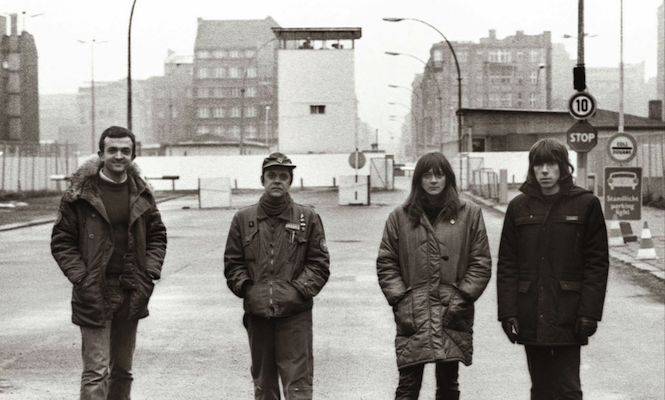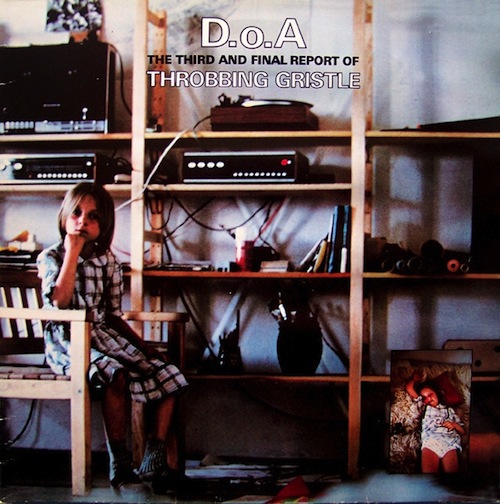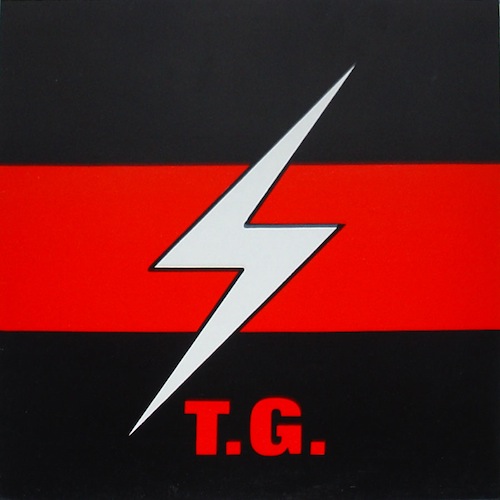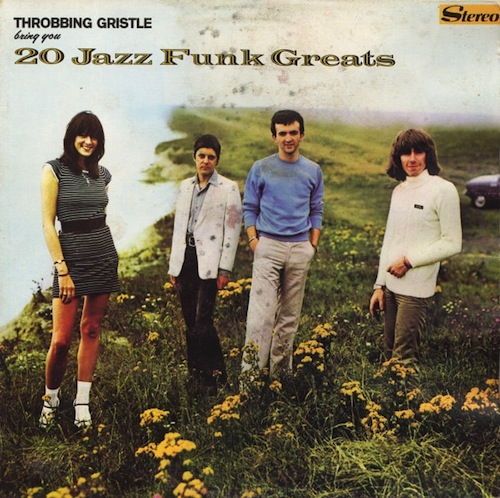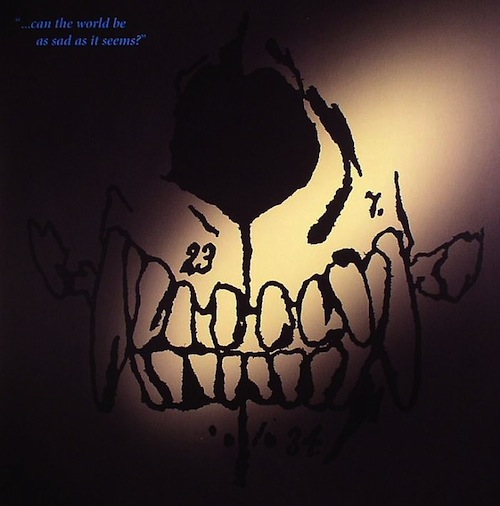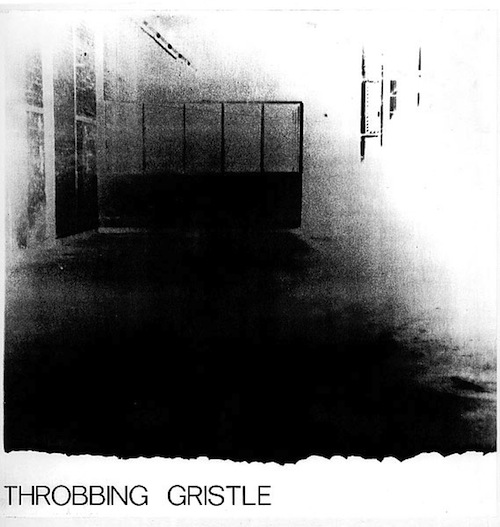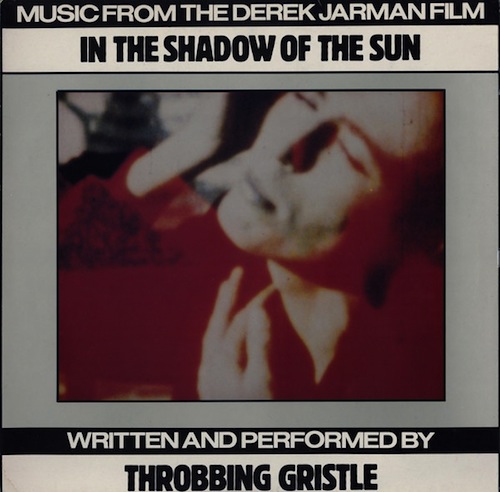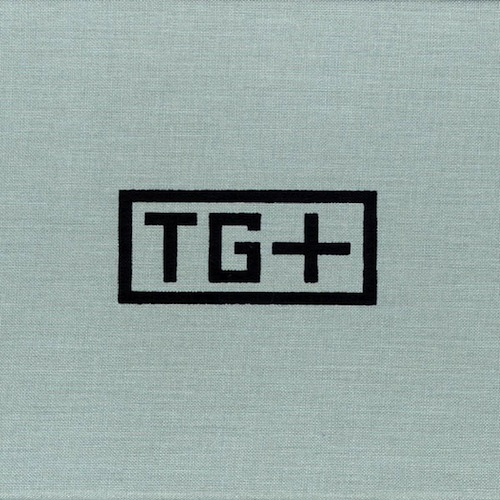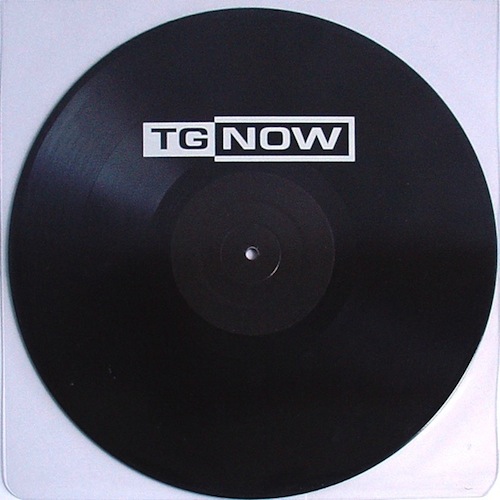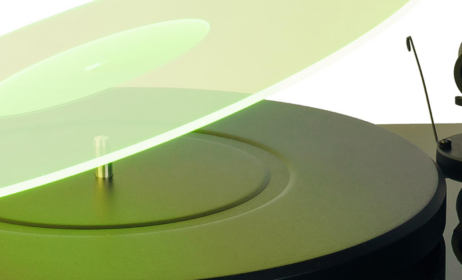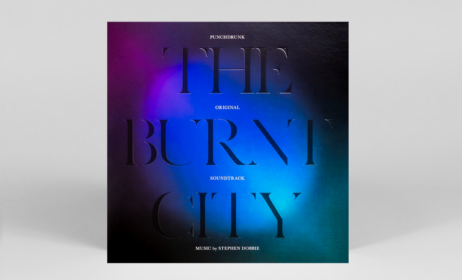Published on
May 15, 2015
Category
Features
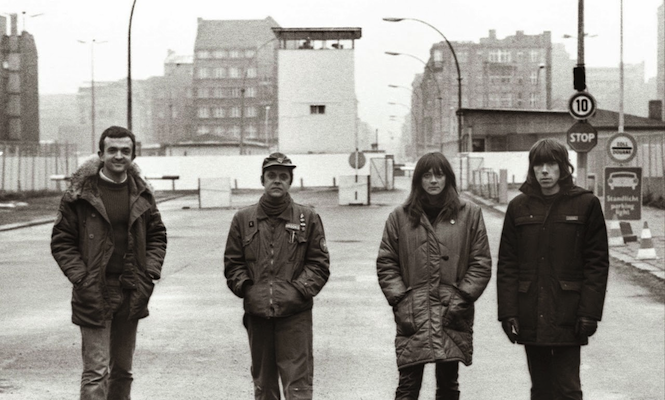
Few bands have been as politically and sonically antagonistic as Throbbing Gristle. Nick Soulsby unpacks the genesis of industrial music through 10 essential Throbbing Gristle recordings.
Words: Nick Soulsby
While punk thrived on impotent kneejerk calls to smash the system, Throbbing Gristle aimed for true revolutionary potential. The chosen approach was to reflect society’s most disquieting horrors – the Moors Murders, the Holocaust, the arms trade – all packaged in the dispassion of company reports, press releases, BBC announcer tones. The band members practised the hoary old pop cliché of using fashion as a branding tool, while undermining it through their choice of uniforms, regalia and that suggestive lightning flash logo.
It’s hard to remember in 2015 that the Seventies’ establishment was run by people for whom the Second World War and the fight against fascism was so elemental to daily existence as to justify the status quo and all its uglier repressions. It’s also hard to recall that Britain was still a nation reliant on its increasingly decrepit industrial infrastructure. Throbbing Gristle referenced this decaying core in its slogan “Industrial Music for Industrial People.”
The latter half of that statement is neglected; the sense of people as components changed, retooled, remoulded by the economic structure into which they’re required to fit. Industrial Records Ltd didn’t offer an escape from the day-to-day, it reveled in it, in projecting the sounds of the working environment back at the audience in exaggerated fashion.
The band was influenced by William S. Burroughs’ prescription that audio recordings spliced with riot sounds might spark actual riots. Throbbing Gristle wove together factory sounds, the clatter of machinery, the weeping of children, disconnected threats in an effort to spark something, anything…
Disbanding in 1981 with a postcard announcing “the mission is terminated”, Throbbing Gristle quit when they started looking like a pop band, a success, something comfortable. This was a band operating at the technological cutting edge using then new sounds which are now commonplace across genres and scenes. Similarly, the stereotypical ‘nastiness’, the reputation they cheerily invited, has overwhelmed appreciation of the diversity and subtlety of much of the music they created across their half-a-decade of effort.
Listen to the records in this playlist as you read or individually as you scroll.
The First Annual Report of Throbbing Gristle
(Recorded 1975, not officially released)
Punk is still creeping out from between the cracks of the pub rock circuit, Krautrock has incorporated early synthesizers into the mix of popular music, disco was showing the potential of loops and breaks. Then, in amidst it, comes this. Never officially released, the music Throbbing Gristle created that year sounded divorced from any genre of the moment even as it stripped instruments, presentation or techniques from each of them.
The first track here, ‘Very Friendly’, vocalizes the events of the Moors Murders and introduces Genesis P-Orridge’s talent as a reporter of the grotesque – at times coming close to newsreader calm before stutters, yelps and moans push the track out into the realms of psychiatric disturbance. The music piles on the aggression, the entire record barely relents in its application of volume, arrhythmic pulses and snarls of static.
It’s interesting contrasting these recordings with TG’s offerings even as soon as the Second Annual Report to see how much more assured, controlled and diabolically effective the band became. While, on the surface, there are clear similarities to tunes like ‘Slug Bait’ or ‘Zyklon B Zombie’, TG’s albums became rapidly more sophisticated constructions laid out with deliberate premeditation while this is simply a roar.
Certain moments in music, like the Sex Pistols at the Manchester Free Trade Hall, are spoken of as catalysts, the kinds of events that made everyone want to have a go. Well, TG birthed an entire genre and some people have had respectable careers just copying this one side of TG’s sound. This record shows where it all began, shows the group inhabiting their own fully-formed aesthetic from day one, show as well how much they would still change and advance over the years to come.
The Second Annual Report of Throbbing Gristle
(Industrial Records, 1977)
The album that established Throbbing Gristle’s reputation as perverse noiseniks with an unseemly interest in the seedy side of life, the Second Annual Report is still a difficult listen today. The album consists of a three part suite called ‘Slug Bait’, then a four parter called ‘Maggot Death’ – they’re all so different it doesn’t really fit thinking of them as multiple interpretations of two songs.
‘Slug Bait Live at the ICA, London’ describes the disemboweling of a pregnant woman and the emasculation of her husband. ‘Slug Bait Live at Brighton’ features a police recording of a peadophile explaining how he had intended to rape a ten year old then chose to beat her head in instead. ‘Maggot Death’ is less explicitly gross, more into pummeling electronics, but still finds time for a full minute featuring a DJ snarling at an unimpressed audience. The soundtrack to ‘After Cease to Exist’ is ostensibly the gentlest piece on the record – a stirring soundscape of echoing silence and creaking fauna.
The rug is then pulled from beneath your feet – as it usually is when it comes to TG – by the title’s overt reference to the Charles Manson composition ‘Cease to Exist.’ The lyrics to that song, in retrospect, were the dirtiness within the hippy dream – a song about abandoning oneself to love wreathed in calls to submit to the will of the singer, to become nothing beneath adoration of someone else. That uncomfortable double-entendre might just as easily have been written to set the tone for the entire TG mission; the endless binding of clean and unclean.
D.O.A. The Third and Final Report of Throbbing Gristle
(Industrial Records, 1978)
There’s a quiet coherence underlying TG’s 1978 offering. On the one hand there’s the cyborg meetings of man and machine on ‘IBM’ and ‘United’ – the clatter of an early computer, TG’s earlier single played with the fast-forward button held down – then there are the four solo contributions from the band members and next the four howling rave-ups that punctuate the album.
The element holding the album together, however, is TG’s fascination with re-contextualised human speech – something that plays out over a further four tracks. This interest incorporates the calm voice of science on ‘E-Coli’, then the cheery murmurings of a child on ‘Hometime’, with each song besmirched by these uneasy surroundings. ‘Hometime’ is musically queasy (and positioned right after the album’s gross centerpiece we’ll come to in a moment) while the voice on ‘E-Coli’ is gently scuffed and obscured leaving it sounding more like a panicked report of an epidemic.
The punch is landed even more firmly on ‘Valley of the Shadow of Death’ and ‘Death Threats’. The former catches a group of men swapping chat until suddenly the most audible voice recounts threatening a homosexual; the latter consists of a couple of aggressive voicemails left on the band’s answer machine.
These four songs subtly draw out the entire TG project by holding up the normalization of everyday violence, the ambiguous consequence of both innocence and of confident officialdom, then the brutal intentions given sanction by the tabloid press’ accusatory campaign against the group.
The centerpiece mentioned earlier is one of music’s most explicit grotesques. ‘Hamburger Lady’, in which Genesis P-Orridge’s discomfortingly detached reading of a letter provides a vision of real life hellishness underlined by the discreet, yet unfaltering, heartbeat running throughout the song – a constant refusal to die.
TG1
(1979)
Essentially a practice session recorded on March 18, 1979 it would be easy to dismiss TG1 as a slightly unnecessary one-off… Except it shows what a well-drilled unit Throbbing Gristle were in their heyday, that even without the audience present for the Heathen Earth session the band were able to create structure improvisations that hold the attention for the full 40 minute duration.
In an era saturated with electronic sound-making it’s easy to be blasé when faced with a disc like this until one remembers that the alien noise TG haul into existence was – at that time – more the preserve of academic music departments than self-produced gangs of musical provocateurs.
There are no voices on the recording, no indication of how the group organized the direction of travel which either indicates four individuals at a peak of creative unity, or communication via head-nods and inaudible gestures. While the maneuvers are familiar – looped and obscured vocals, sputtering drum machines, surging-souring string instruments fed through effects – hearing them in this almost orchestral format, with ideas surging in/out of one another, gives them new life.
Vestigial elements of both ‘What a Day’ and ‘Convincing People’ are toyed with before being subsumed back into the mix – each would emerge as fully fledged songs on the 20 Jazz Funk Greats album six months later having been plucked from these free sessions and honed to their final form.
20 Jazz Funk Greats
(Industrial Records, 1979)
“Yeah! Nice…Mine tonight…” The words punctuating the title track are a parody of Whispering Bob Harris, presenter of Seventies’ music show The Old Grey Whistle Test. The entire album is laced with such darkly humorous moves. The tame cover photo shows the nattily dressed band – white disco jacket, comfy slacks, mini-skirt – stood amid flowers on a clifftop. Yet TG also prepared a counter-image, with the band now lining up in reverse order and with a naked, dead figure at their feet. The chosen scene of natural beauty was Beachy Head, a notorious suicide spot.
The impetus for the record apparently came about from P-Orridge’s mum’s request that the band record something ‘nice.’ Certainly this is the easiest entry point for TG virgins, its cheerful breaching of lounge jazz and disco contains some of the band’s prettiest moments on songs like the breathy ‘Hot on the Heels of Love’. Similarly ‘Tanith’ and ‘Exotica’ are gentle interludes in which TG’s usual jagged punctuations are kept to a minimum while Chris Carter brings another of his much-underrated synthesizer masterpieces on ‘Walkabout.’ You could be fooled into thinking this was indeed easy-listening industrial.
The band declare their game openly on ‘Convincing People.’ On the surface a denunciation of undue influence, PR and propaganda – the song could as easily be speaking of how TG’s amiable mask always slips. The song ‘Persuasion’ finally gives the game away completely with a calm chant about manipulating someone into a pornographic photo shoot playing out over a backdrop of disquieting audio clips.
Read Chris & Cosey on 20 Jazz Funk Greats here.
Heathen Earth
(Industrial Records, 1980)
A wry pun of ‘Heaven on Earth’? Perhaps. The band weren’t opposed to jokes such as naming a song ‘Improvisation’ on an album of this nature. Between 8.10 and 9pm on February 16, 1980 – a Saturday – 24 people were present either as witness or participant to the recording of Throbbing Gristle’s new album. The album was simply intended as a way to record live without the vagaries of unscheduled audience participation, poor venue sound quality or unfavorable ambience.
An instrumental version of an old favorite, ‘Something Came Over Me’, is whipped out in amid new compositions such as ‘The Old Man Smiled’ – a literary tale paying tribute to William S. Burroughs who bequeathed to TG the idea that one could ‘cut reality’ by interjecting audio samples into day-to-day life – or the ironic combination of regulated fascist march and counter-command on ‘Don’t Do as You’re Told Do as You Think’.
The sampled speech on this release doesn’t have the same pointed meaningfulness as usual; the conversations on ‘Still Talking’ are apropos of nothing, while concluding the release with the wake-up sequence of a self-hypnosis tape merely feels comforting. It’s a marker that this record needs to be appreciated for TG’s remarkable ability as live collaborators and improvisers and seen in the light of their live performances rather than their more ingeniously subversive and arch studio albums.
Journey Through a Body
(Walter Ulbricht Schallfolien, 1982)
As bands age, sometimes more tangled conceits are required to keep performance interesting to the players. In this case, for the final studio session of Throbbing Gristle, the entire album was improvised and recorded over the course of five days – one day per composition.
The concept is intended to follow a human body from birth to death, an idea the band were able to hang their work upon. What’s most noticeable about the album, as a sonic experience, is the openness to acoustic instrumentation on display. While xylophones and harps make an appearance, it’s the piano which is used most liberally within the blur of disturbing samples, sputtering amplifiers and humming electronics. There are few vocals, P-Orridge adds a brief incantation to ‘Catholic Sex’, but otherwise this is a purely instrumental outing for the band.
The band seem to be dwelling on their surroundings – they were in Rome for the week – hence P-Orridge’s priestly tone on the aforementioned song, the Italian song titles, the apparent dwelling on Mafioso-style violence. The opening track, ‘Medicine’, reads initially like one of TG’s essays in blurring music and sonic reportage – a monitor beeps continuously as nurses coo over a birth. From that point onwards, however, its intriguing to hear a TG album where so much of the band’s signature sound has been voided and suppressed.
In the Shadow of the Sun
(Illuminated Records, 1984)
By 1980 Genesis P-Orridge was already well-progressed with his interest in ritual magik – and a year later would set up Thee Temple ov Psychick Youth to pursue it. Therefore it made perfect sense for Throbbing Gristle to provide a soundtrack to film director Derek Jarman’s visual meditation on the theme.
Listened to divorced from the slowed and color-treated imagery of the film, the band’s improvisations can seem unguided. Married to the footage, however, and there’s a clear unity between event and audio response from TG. It’s a relatively gentle piece throughout combining stroked and brushed strings, a range of chimes and bell tones, synthesizers and homemade electronics, all kept on a tight leash.
Without the flaring bouts of audio torture, lacking the structured brevity of TG’s song-form efforts, or the dynamic motion of their live-sets, the music here is stamped firmly with its function as background sound. That doesn’t make it mere whimsy though and there’s nothing merely ambient about the sounds TG conjure up. The phrase ‘waiting for the other shoe to drop’ was birthed by travelers bedding down in rickety old coaching inns who, upon hearing a shoe hit the floor in the room above, would be unable to head back to sleep until the accompanying shoe was also discarded.
This recording shows off TG’s knack for keeping the listener waiting through each moment of pleasant drift for a return to discordancy or for the impact of an unsettled moment.
TG Live / TG24 / TG+
(The Grey Area, 2002/2004)
June 1976 to May 1981, a mere thirty-six live performances across a five year life span, yet every single one was taped and is now available. There’s a definite momentum visible, the grisly violence of early shows gives way to a more professional entwining of songs and instrumental ligaments. The band’s final two shows in the U.S. are exercises in contrast; Los Angeles is a headlong assault on the crowd, San Francisco revels in ritual and careful control – both are essential.
As an entry point, Mute Records issued a four disc series culling highlights from each era of the band and kindly gave names to each component which does help the mind process the material and comprehend it as songs rather than unending improvisation.
If one wants the full gulp, however, then the boxsets TG24 and TG+ contain every live remnant of the original Throbbing Gristle (there’s also TGV – a DVD boxset of video footage.) TG24 was a reissue of a cassette box limited edition the band released part way through their original run – TG+ completes the mission. These two releases demonstrated TG’s continued interest in consumption and in fetishization of objects. Each grey box came complete with an inner tablet containing art related to the band, the boxes were strictly limited edition and priced accordingly, each concert had an individual slip-cover with a photo on the back of each. They’re beautiful and beautifully over-the-top too.
Ultimately, having sat in a conservatory through the night listening to sixteen straight hours of the TG24 set (with the family dog occasionally peering in and cocking its head at one dog-whistle tone or another), this is not an experience one will repeat often. Rather the live career of TG is something to be dipped into, enjoyed, returned to periodically. It’s all about choosing a period you enjoy the most; early swirl, mid-era songs, late-era dynamism.
TGNow
(Industrial Records / Mute, 2004)
This four track reintroduction to the sound world of Throbbing Gristle could have ended horribly, either in a pastiche of former transgressions or an aping of the latest in-fashion sounds. Instead, the 2004 return of TG is an eerie triumph.
The first track, ‘X-Ray’, strangely organic throbs and pulses indicate both the machine in question and the body to which they are exposed. It’s no grand statement, no aching attempt to shout for relevance, it simply let’s itself creep into the ears.
This is maintained on the second song, ‘Splitting Sky’, where Genesis P-Orridge’s vocals enter as a dried husk reinforcing the impression of a corpse returning to life. The unity of the music is visible throughout, a crepuscular machinery so skillfully tweaked that it takes time to notice the subtlety of the deliberate shifts.
On each song the voice gets stronger, the musical interventions more forceful – strength returned to TG and by the end of the EP it was clear they didn’t return to ask for permission to enter the musical landscape of 2004, they came to snatch us back into the dark shades of their world.

